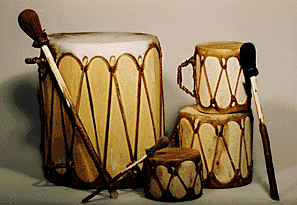
cross-posted from the Rabbis Without Borders Blog at myjewishlearning.com
During my first year with a new congregation, I’ve been offering a creative service slot once a month. Borrowing the term from Rabbi Hayyim Herring’s book, ‘Tomorrow’s Synagogues Today’, our ‘Ritual Lab’ Shabbat lets congregants know to come expecting the unexpected for that particular service. Over the course of the year, some services have been more experimental in format than others – more or less similar to the flow and musical styles of our regular Shabbat worship – but each have had a specific goal in mind.
My ‘training’, such as it was, for shaping these creative services came from the Jewish Renewal movement, having spent many years praying with these communities and creating prayer services in that context prior to my formal rabbinic studies. There, one of the terms coined is ‘interpretive davenning‘ – a way of entering the prayer experience in an interpretive mode so that there is a sense of narrative and conscious spiritual journeying that accompanies the flow from one prayer in our liturgy to the next. Different modes may be explored to accompany particular prayers in a way that helps to peel back the layers of history, poetry, and other aspects of meaning found in each prayer. Each of these modes helps to uncover something of the meaning of the prayer, or highlights an aspect of personal spiritual reflection that a prayer might help to highlight. Sometimes it is the mind that is engaged, and sometimes it is something more experiential that helps us see the words of prayer as vehicles for getting beyond words; in many ways this can be the deepest experience of prayer. Such modes can include meditation chanting, movement, dance, study/discussion of a prayer text in pairs, juxtaposing traditional prayers with other kinds of texts to create new readings and meanings, and more.
I so often hear congregants say that the words of our traditional liturgy get in the way of being able to find spirituality in the Jewish communal prayer experience.This is partially because we lack the tools in our spiritual toolbox to unpack the layers of meaning and possibility found in those prayers. But it is also because the sheer amount of words can be overwhelming so that we cannot possibly derive significant meaning from all of them in every service. Of course, not everyone enters into prayer with this expectation – for those who pray in a more traditional mode, it is the overall ritual and rhythm of the familiar prayers that provide the vessel for taking time out to enter into a different mode that is the primary experience. But for many Jews, and certainly in what has been, historically, the more rationally-focused Reform movement’s approach to prayer, the perceived lack of meaning gets in the way for many individuals seeking a spiritual practice that truly touches and transforms them.
In our ‘Ritual Lab’ services, typically two things happen simultaneously; the prayer service becomes a vehicle through which we can attach a learning experience on an infinite number of topics and, at the same time, the materials or experiences we weave into the service brings a new sense of meaning to the individual prayers that have always been there. The next time we pray our way through our traditional liturgy, we bring the insights from these interpretive experiences with us, and they forever change our understanding of and relationship to these traditional prayers.
So, for example, the Shabbat of Thanksgiving weekend, we held a drumming worship service, juxtaposing insights from Native American spiritual traditions with Jewish ideas and writings that resonated with similar insights. During Pesach we held a ‘Song of Songs Shabbat’ that raised awareness of the Song of Songs being read at Pesach, introduced Jewish mantra chanting into the worship experience, explored the mystical roots of Kabbalat Shabbat and the connections to Song of Songs, and highlighted the nature imagery in our traditional prayers and our own spiritual experiences in nature. Sometimes I’ve been intentionally provocative. For example, there is great ambivalence in the Jewish world about acknowledging Halloween in any way in our Jewish community. I personally don’t feel that this is a useful battle to pursue, given the place of this day in American popular culture and the families and children who delight in the modern expressions of dressing up and going trick-or-treating. Instead, the Friday night closest to Halloween became a time to weave teachings about Ghosts, ghouls and demons found in Jewish folk and mystical tradition into the fabric of our service, demonstrating how some specific prayer and ritual traditions that we still have today may have their roots in these stories and beliefs.
For some of our more regularly attending worshipers, these services have become a highlight. They tell me that the format offers a way for them to be exposed to different kinds of spiritual practice and ways to pray that are accessible and can be internalized, while also providing a forum for learning in a setting other than an adult learning class. The feedback tells me that these creative services are fulfilling their purpose. I look forward to another year of experimentation in our Ritual Lab.





